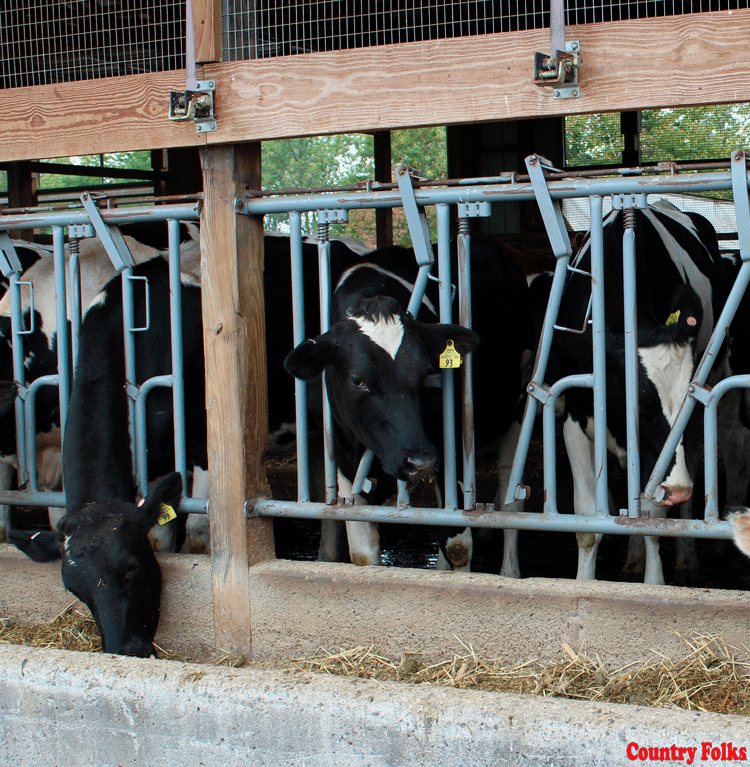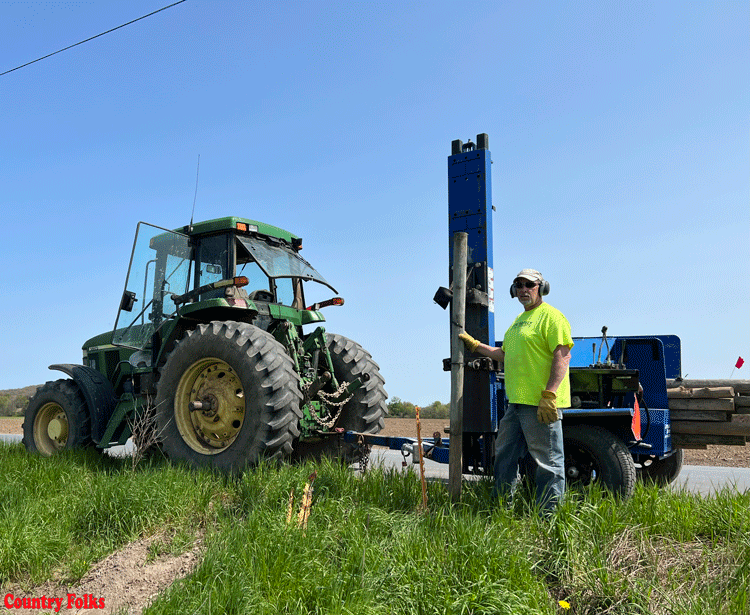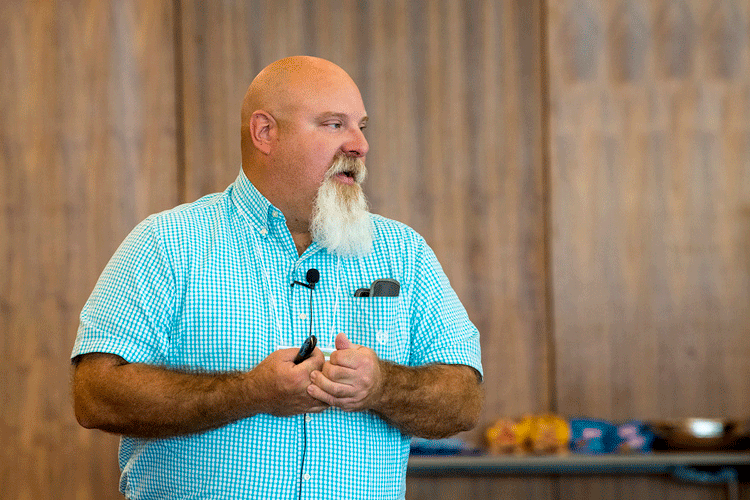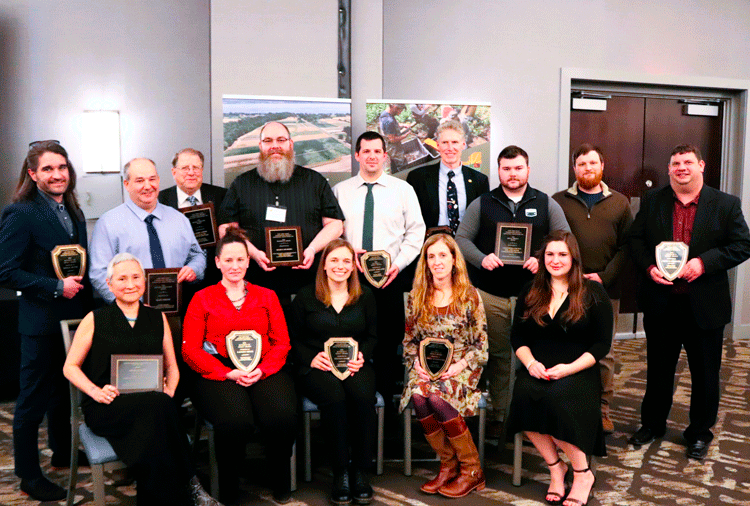
by Tamara Scully
The recent Cornell Pro-Dairy and Northeast Dairy Producers Association Operations Managers Conference featured a full agenda, with a focus on developing the dairy farm workplace culture on three levels: people, crops and cows.
Workshop topics included reproductive management, targeted mastitis treatments, labor efficiencies, crop management, financial planning and employee development.
Building a successful farm culture and impacting the dairy’s bottom line through employee engagement as the first step to increasing quality and decreasing inefficiencies was emphasized in the majority of sessions. Engaged employees are the first and most necessary step to ensuring that all jobs are done effectively and efficiently.
Farm culture
Workplace culture includes the people – owners and administrators as well as employees – and begins with the mission and values communicated from the top levels. The first step is to decide, as an employer, the values that will guide your farm.
“You can operate with your eyes closed and hope for the best, or take control, plan your future and walk with your eyes wide open,” Jon Huseth, owner of Clay View Dairy LLP in Minnesota, said. Huseth served as a panelist addressing the issue of employee development. “Creating and maintaining organizational accountability” means investing in and developing a culture that “embraces continuous improvement, high achievement and respect. Everyone has a role on the team and great teams give their players opportunities to contribute.”
Employees who are engaged in your farm’s success don’t just happen. Developing quality employees requires a culture of trust, respect, accountability, clearly defined goals, collaboration and communication.
Culture is “how we do things around here,” Libby Eiholzer of the Northwest New York Dairy, Livestock and Field Crops Team said, and is defined as a set of repeatable behaviors. Creating a culture starts with defining your goals and then working step-by-step to implement positive changes. Eiholzer identified the three factors which impact farm culture: organizational, environmental and people.
Organizational factors include the mission and vision of the dairy, along with the code of conduct and the values. These are not only communicated through written statements but through the day-to-day contacts employees have with employers. The manner in which you address employees, lead and teach them and provide feedback define your culture.
Culture is also defined by the environment on the farm. Is the farm well-organized and clean? Do employees have a pleasant place to take breaks? Are they provided with the correct tools needed for their jobs?
And culture involves interactions amongst employees. Is the atmosphere collaborative and cordial? Are responsibilities clearly defined? How is conflict handled?
Ethnicity and culture
With so many dairy farm workers coming from abroad, particularly Guatemala, Mexico and other Central American countries, understanding the differences between the North American attitude and their native cultural attitude is key. Eiholzer identified three distinct areas whose differences are important to recognize: power distance, collectivism versus individualism and uncertainty avoidance.
Cornell Agricultural Workforce Specialist Dr. Rich Stup also addressed the issue of cultural differences in his discussion of employee onboarding. Onboarding encompasses the entire process of hiring new employees, training them in skills and safety, connecting them to the team and developing a productive workforce.
“We need to be highly effective in our businesses and able to onboard people from a lot of different backgrounds,” he said.
In cultures where there is a high power distance, including Central American, subordinates do not feel empowered to make decisions or to approach authority figures, unlike in the United States, where people relate to one another more or less as equals, no matter their job description. Another cultural difference is that of collectivism. Guatemalan culture is much more collective, and much less individualistic, than the United States. Mexico, too, is less individualistic than the United States. This means that the focus is less on individual self-reliance and more on communal well-being and interdependence.
Uncertainty avoidance involves the creation of laws, religious beliefs and other tools to combat anxiety. Where a culture’s uncertainty avoidance is high, structured situations and predictability are important, and religious or superstitious beliefs are prominent. Guatemala is at the top of the list of countries in uncertainty avoidance, Eiholzer said. Understanding these basic differences in societal structure can help to create a farm culture where all employees feel comfortable contributing, secure in their positions and respected.
Welfare on the farm
Dr. Robert Hagevoort of New Mexico State University addressed the correlation between employee and animal welfare. The animal component has to do with phenotype – the expression of genetics and the environment. The animal environment includes feed, housing and climate. It also includes human influence.
“Animal welfare is an outcome: the positive outcome of the interaction between human and animal,” he explained.
If human welfare is improved, it should positively impact animal welfare, although the metrics to measure this are not well quantified. Human welfare on the farm has to do with overall comfort –ergonomic designs, cleanliness, safety – as well as a culture of commitment to animal and human respect.
Employees need to be educated about animal behaviors. Employees who aren’t familiar with cow behavior can often act in a way which creates an uncomfortable situation for the animals, or can become frustrated, leading to animal abuse.
Dairy farms are growing larger, and farmers are managing people – their employees – more than they are focusing on cow care. Employees are increasingly not from farming backgrounds, are not highly educated and their jobs are growing more specialized.
Training employees to succeed can create a higher level of human welfare as they become better equipped to handle the responsibilities or the job. Selecting employees with the right personality traits to work with animals is an important consideration. The farm’s overall performance – including the economic – can be influenced by the human welfare factor.
Getting the human part of the dairy equation correct requires a conscious decision to build a workplace culture and a focus on employee development. Employees impact every aspect of the dairy farm operation, and creating a culture that motivates people to do their best results in dairy farm success.
Dr. Conrad Spangler, DVM, of Riverview LLP, who presented a workshop on building a culture of farm safety, had this to say about dairy farm success: “The secret ingredient is people. Your have to win the hearts and change the minds of people.”











Leave A Comment